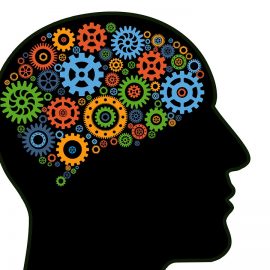

This article is an excerpt from the Shortform book guide to "Come As You Are" by Emily Nagoski. Shortform has the world's best summaries and analyses of books you should be reading.
Like this article? Sign up for a free trial here .
What is Emily Nagoski’s book Come as You Are about? What misconceptions about sex does modern culture perpetuate?
In her book Come as You Are, Emily Nagoski uses scientific research and her years of experience as a sex educator to change the negative way that women talk, think, and feel about their sexuality. Arguing that a scientific perspective on sexuality can free women from unrealistic standards and help them to appreciate their individual experiences, Nagoski considers sexuality from every biological angle while dispelling cultural misconceptions along the way.
Below is a brief overview of the key themes explored in the book.
Come as You Are: The Surprising New Science That Will Transform Your Sex Life
In her book Come as You Are, Emily Nagoski argues that our culture’s tendency to consider men’s sexual experience the standard perpetuates a lot of misinformation about what’s sexually normal and healthy for women. This tendency forces women to view themselves through a scope that wasn’t made for them, ultimately inflicting harm to their sexual health and well-being.
(Shortform note: These false ideas about what’s normal with regards to women’s sexual experience stem from a long history of contempt toward female sexuality, even in the medical field. Research examining attitudes toward female sexuality demonstrates that, as recently as the 19th century, doctors were advocating for clitoridectomies to “cure” masturbation and nymphomania.)
Nagoski believes that to put an end to these misguided cultural standards and the damage they cause, women must better understand the science behind their sexuality. She says that by viewing their sexuality from a scientific rather than cultural perspective, women can free themselves from unrealistic standards, learn to appreciate their sexuality for what it is, and ultimately improve their overall well-being.
(Shortform note: In advocating for a scientific perspective, Nagoski doesn’t acknowledge how difficult it can be to identify factual scientific information in an environment that allows for the quick and easy spread of misinformation and pseudoscience. For example, in 2017, the popular wellness website Goop was sued for making false claims about a product it claimed could improve your sex life just by inserting it into the vagina for hours at a time. After many customers had already purchased the product, a lawsuit ultimately condemned Goop’s claims as counterfactual, and health experts warned that using the product could cause bacterial infections.)
With this in mind, we’ll first cover the basics of anatomy and the mechanism in our brain that governs our sexual response. Then, we’ll discuss the influence of context on our sexual experience, the concepts of arousal, desire, and orgasm, and how to find true enjoyment in sex by cultivating confidence and joy in ourselves.
Our Similar But Unique Anatomy
According to Nagoski, both men’s and women’s genitalia have the same origins, stemming from the same embryonic tissue. However, these organs ultimately develop in unique ways, take distinct shapes, and serve different functions depending on a person’s sex. For example, according to Nagoski, the male equivalent of the clitoris is the penis. Whereas only the head of the clitoris is visible outside of a woman’s body—as the rest extends far inside—much of the penis is visible outside of a man’s body.
(Shortform note: The fact that Nagoski points out the true size and shape of the clitoris is important, as many people don’t realize just how far it extends into the body. In fact, it took until 1981 for any health body to create an anatomically correct diagram of the clitoris, and many school textbooks don’t even mention this organ, let alone explain its true size and shape. This persistent misinformation and misconception support her argument for the need for a biological understanding of female genitalia.)
Nagoski argues that their differences in appearance have everything to do with their differences in function. Whereas the clitoris is only responsible for sensation, the penis is responsible for sensation, penetration, ejaculation, and urination. (Shortform note: Nagoski doesn’t elaborate on why these differences in function lead to differences in appearance. The penis must extend further than the clitoris as it must be long enough to penetrate and ejaculate into the vaginal canal, which is inside a woman’s body.)
The Variation in Female Genitalia
Nagoski tells us that just as men and women have similar parts organized in different ways, female genitalia, too, can vary a lot from woman to woman. In particular, she notes that the size, shape, and even color of everything from the clitoris to the labia can differ greatly depending on the person. Understanding this from a biological perspective can help women realize that whatever the unique appearance of their genitalia, they’re normal and healthy.
(Shortform note: While Nagoski specifically mentions women here, men have a lot of genital variation too. For instance, the penis and scrotum can differ in size, shape, and color in much the same way as female genitalia. What’s more, men also face feelings of shame about the appearance of their genitals—for instance, the size of their penis—that stem from a toxic and pervasive standard for what it means to be masculine.)
Your Individual Sexual Personality
Next, Nagoski tells us that according to a groundbreaking theory developed by sex researchers at the Kinsey Institute, everyone is born with a two-system mechanism in the brain that determines their unique sexual personality. The two systems are called the Sexual Excitation System (SES) and Sexual Inhibition System (SIS):
The 2-System Mechanism of Sexual Response
According to Nagoski, the Sexual Excitation System (SES) is responsible for the process of arousal. It constantly scans our environment for potential sexual stimuli. (Common examples could be the scent of cologne or seeing our partner in a bathing suit.) When the SES identifies sex-related stimuli, it sends a signal from our brain to our genitals so that our body can prepare for sex.
In contrast to the SES, Nagoski says that the Sexual Inhibition System (SIS) controls the process of impeding arousal. The SIS scans our environment for reasons not to have sex (for example, the risk of unwanted pregnancy) and sends a signal to our brain when something relevant is identified.
Nagoski tells us that each individual’s SES and SIS have different levels of sensitivity to stimuli in the environment that determine a person’s particular sexual needs. For example, someone with a sensitive SES wouldn’t need nearly as many (or as specific) stimuli to become aroused as someone with an insensitive SES.
(Shortform note: Nagoski tells us that each individual’s level of sensitivity varies, but she doesn’t discuss which factors contribute to those differences. According to the Kinsey Institute for Research in Sex, Gender, and Reproduction, which developed the two-system model, each person’s sensitivity levels depend on both genetic and environmental factors, including their unique sexual physiology, history, and personality.)
The Mechanics of Context
Nagoski also tells us that contextual factors, such as who we’re with, potential risks, and even our mood, can make something that’s normally a turn-on have little effect (or even the opposite effect) on our arousal. But why exactly does this happen and how does the process work? Research shows that it’s all about how our brain processes the environment around us: If we perceive it to be comfortable and safe, Nagoski says our brain will almost always see stimuli as pleasurable enough to warrant desire. On the other hand, if we perceive the environment to be stressful or dangerous, our brain will almost always approach the stimuli with avoidance and anxiety, even if they would usually arouse us.
(Shortform note: Here, Nagoski’s discussion of the role of context focuses exclusively on sexual response. However, context influences far more than our brain’s perception of sexual stimuli—in reality, it shapes the way we process all types of information. One example of context’s role in information processing is the way it influences our interpretation of emotions through facial expressions. For instance, we’re likely to perceive the emotion behind a photo of a crying woman as sadness. However, if we were to add context by broadening the scope of the photograph to reveal a man on one knee with an engagement ring in hand, our interpretation of the emotion would change to happiness.)
Context’s Effect on Women
Although context plays a role in everyone’s sexual response, Nagoski states that research shows that women are more sensitive to it than men, especially mood and relationship factors. While on average women respond best to contexts that are low stress, high affection, and explicitly erotic, there’s variation from woman to woman and situation to situation.
(Shortform: Research suggests that the reason for women’s higher level of sensitivity to context relates to parental investment theory, which predicts that the parent who’s more invested in raising their offspring will be more sexually selective. In other words, because women have historically taken a more active role in raising their children than men, they’ve developed a higher sensitivity to contextual factors that might inhibit sexual response, such as having sex without a condom.)
The Power of Emotional Context
According to Nagoski, emotional factors like stress and love are important contextual factors that impact not only our sexual response but also our overall sexual experience and well-being. Let’s explore each of these factors in detail.
Stress
According to Nagoski, stress is a process or system of changes in our minds and bodies that occurs in response to threats. Although it used to be an evolutionary adaptation to respond to real, life-threatening situations—a lion chasing us—these days, it’s a response to more subtle and ongoing things that threaten our well-being, like bills to pay. Nagoski argues that such long-lasting stress can have various negative effects on our sexual response, including reducing physical arousal and interest in sex.
(Shortform note: Although Nagoski herself doesn’t go into detail about why stress affects sexual response, other sources point to some possible answers. For instance, hormonal changes could be responsible for reducing interest in sex during stressful periods. When our bodies produce more of the stress hormone cortisol, the production of testosterone—the hormone that most greatly impacts desire levels—is simultaneously reduced. Additionally, relational factors may play a role: When we’re stressed, we tend to close ourselves off from our partner, which negatively impacts intimacy and desire for sexual contact.)
How to Manage Stress
Nagoski suggests that to prevent our ongoing stress from inhibiting our sexual response, we must take deliberate steps to allow our bodies to complete the stress cycle, therefore ridding itself of the adrenaline and cortisol. Although physical activity is the most efficient way of accomplishing this, Nagoski recognizes sleep, affection, meditation, crying, screaming, art, and even grooming rituals as effective ways of managing stress.
Love
Nagoski tells us that love is the innate process that bonds us with other people—whether they be friends, caretakers, or romantic partners—and that the name for this bonding process is attachment. Nagoski argues that depending on how our caregivers cared for us as children, we develop different styles of attachment that not only dictate our behavior in our romantic relationships but also affect our sexual experience: If our primary caregiver was a reliable source of love and safety, we will likely develop a secure attachment style, which often leads to more frequent and enjoyable sex. On the other hand, if our caregiver wasn’t dependable, we will likely develop an insecure (anxious or avoidant) attachment style, and our sex lives will suffer.
| Attachment Style Characteristics Although Nagoski identifies the three types of attachment styles, she doesn’t discuss the general characteristics of each type and how they lead to a specific kind of sexual behavior. According to the book Attached, individuals with a secure attachment style are loving partners who are comfortable with intimacy and communication. These characteristics naturally lead to healthier and more enjoyable sex because having a close and vulnerable relationship with your partner makes it easier to experience pleasure during sex. On the other hand, those with an anxious attachment style are plagued by low self-esteem and constantly worry about the state of their relationship. Because of this, they tend to use anything they can to become more attached to their partner—including sex—and their fear can turn sex into something emotionally painful rather than enjoyable. Finally, people with an avoidant attachment style are emotionally distant and threatened by intimacy. They don’t like to talk about their feelings and have a strong preference for autonomy. It’s this inclination toward independence and avoidance of emotional intimacy that ultimately leads to less frequent and more casual sex. |
The Negative Impact of Cultural Context
According to Nagoski, cultural context also impacts our sex lives. Whether we’re aware of it or not, culture dictates our beliefs and ideals, including how we feel about sex. Women in particular grow up hearing a lot of negative messages about sex, which creates deep-seated feelings of shame and fear that can be detrimental to their sexual experience and well-being.
(Shortform note: Men, too, develop feelings of shame due to negative cultural messaging. Research shows that there are several factors comprising men’s sexual shame, including distress about their sexual inexperience, guilt about masturbation and viewing pornography, dissatisfaction about their body, and insecurity about their sexual performance, among others.)
The Effects of Cultural Context
Nagoski says the negative impact of cultural context is especially evident in women’s internalized self-criticism and sexual disgust, which can have long-term, damaging effects on women’s sexuality due to their tendency to create stress and inhibit sexual response.
Self-Criticism
The first negative effect of cultural context that Nagoski identifies is self-criticism, which usually takes the form of criticism toward the body. Nagoski asserts that the practice of self-criticism is so deeply ingrained in our culture that by the time girls hit puberty, they’ve already begun to internalize the practice of body shaming. Even before adulthood, young girls’ self-confidence is severely neglected.
(Shortform note: The rise of social media use in recent years by children and teens has greatly contributed to this problem. Research conducted by Facebook, for example, showed that Instagram worsens body image issues for 1 in 3 girls.)
In addition, our culture has also created a reality where girls worry about their weight from an early age. Nagoski claims this because mainstream media outlets, and even some academics, equate lower weight and thinness with health and beauty. Because of this, Nagoski adds, countless girls and women desire to lose weight to improve their health or appearance, and in some cases, they even develop eating disorders.
(Shortform note: Although Nagoski focuses on the media and academics as the main sources of women’s fear of fat (and, consequently, eating disorders), it’s not the only culprit. Familial dynamics or peer pressure can also cause fear of gaining weight. For example, if you grew up with a mother who constantly scrutinized her weight, you would be likely to internalize the same fears.)
Sexual Disgust
Nagoski tells us that another negative effect of cultural context is sexual disgust. She says that sexual disgust is a withdrawal response we have toward sex-related things that we’re conditioned to consider gross. Nagoski claims that our culture has taught us to feel disgusted by many natural aspects of sex (for example, the sound of a queef, which is a release of air from the vagina). (Shortform note: Here, Nagoski presents disgust as a negative reaction that disrupts our sexual enjoyment. However, in other cases, our sexual disgust response helps us avoid destructive sexual behaviors like incest, rape, and pedophilia.)
What’s more, Nagoski adds, research shows that women are more sensitive to learned disgust than men, especially in terms of sex-related triggers. And depending on the woman, it can take as little as one instance of a negatively portrayed sex-related stimulus for her brain to classify it as disgusting. (Shortform note: While it’s true that women are more sensitive to learned disgust, research has yet to provide a conclusive answer for why this is the case—though there are some theories. One potential explanation is that women are better able to reproduce when they avoid things that could infect them or their children with disease.)
Subjective Arousal vs. Genital Response
According to Nagoski, another important factor influencing our sexuality is arousal. In particular, she notes that our subjective experience of arousal and genital response don’t always overlap, a phenomenon called non-concordance.
To demonstrate with an example, imagine you’re watching a sex scene in a movie. The scene doesn’t appeal to you because you don’t think the actors are attractive. Despite this, you find yourself becoming physically aroused at the sight of sex on the screen.
(Shortform note: While here, Nagoski talks purely about non-concordance in a sexual capacity, in a TED talk on the subject, she noted that the phenomenon can occur in non-sexual situations, too. For instance, we can bite into a piece of food that we think tastes disgusting but still experience the physical response of salivation, which usually means we find food appealing.)
Nagoski notes that research shows marked differences in the frequency of non-concordance between the sexes, although it’s common for both. Men experience non-concordance about 50% of the time; for women, that number jumps to around 90%.
(Shortform note: The differences observed between men’s and women’s arousal may be based on a problematic comparison between their genitalia. Many studies have compared the sexes by measuring the response of the penis and the vagina. However, as Nagoski pointed out earlier, the equivalent of the penis is the clitoris—not the vagina. Preliminary research measuring clitoral response suggests that women’s physical response and subjective arousal may align more than previously thought.)
Common Myths About Non-Concordance
Despite non-concordance being remarkably common, Nagoski argues that society still tends to spread a lot of misinformation about the relationship between subjective experience and genital response.
For example, she says that our culture gives us the false impression that genital response automatically equates to sexual pleasure (such as women and men in the media saying “I’m so wet” and “I’m so hard” to express that they’re turned on). She argues that the reason for this misconception is that men—who experience lower levels of non-concordance—are considered the standard, which creates the expectation that alignment of genital response and subjective experience should be the norm for everyone.
(Shortform note: Although Nagoski bases her argument on the fact that men experience lower levels of non-concordance, some scientists have questioned whether research supporting this claim has found accurate results. They suggest that certain methodological flaws could have misrepresented concordance estimates in both men and women. These include potential issues with the sexual stimuli chosen by researchers, self-reporting measures, assessments of genital arousal, statistical methods, or participant characteristics like age and hormone levels.)
Because misinformation about non-concordance is so prevalent in our culture, Nagoski suggests that women may need to explicitly address it within their relationships. One way to do this is to reassure your partner that non-concordance is normal and that you’re perfectly healthy. (Shortform note: Although Nagoski doesn’t elaborate on how to provide this reassurance, one strategy could be to point out that men also experience non-concordance, like when they have erections in inappropriate situations or while sleeping.)
Understanding Desire
The next element of sexuality we’ll explore is desire. Nagoski tells us that the best way to think about desire is that it’s the result of context interacting with what we find pleasurable. In other words, depending on the contextual factors at any given time, we may or may not find something pleasurable enough to want more of it (as discussed in Chapter 3). According to Nagoski, exactly how pleasurable a person needs to find something before they experience desire depends on the individual.
(Shortform note: Although Nagoski acknowledges that everyone has a different desire threshold, she doesn’t touch on cases where people experience no desire at all. For instance, some people identify as asexual, which means they have little to no sexual attraction to others or desire to have sex. Depending on the person, the absence of desire can extend more broadly: For example, some asexual individuals feel no desire to masturbate or even be involved in romantic relationships involving non-sexual intimacy.)
Although there’s a wide array of variation from person to person, Nagoski says we can generally divide our experience of desire into two types: spontaneous and responsive.
Spontaneous vs. Responsive Desire
Nagoski defines spontaneous desire as when a person wants sex immediately after recognizing a sex-related stimulus, such as getting turned on by the scent of a partner’s perfume. Someone with a low pleasure threshold would experience this type of desire more easily because it generally takes very little stimulation to make them want more.
(Shortform note: Why might someone have a low pleasure threshold—or, as some might put it, a high libido—and experience high levels of spontaneous desire? According to research, factors like hitting either puberty or middle age, increasing your daily physical activity, and lowering your stress levels can increase your levels of desire.)
In contrast, Nagoski defines responsive desire as when a person experiences desire in response to sexual pleasure, such as physical stimulation like kissing or touching. This type of desire is especially common for those who have a higher threshold because they generally require higher amounts of pleasure to become turned on.
(Shortform note: One point that Nagoski’s discussion doesn’t touch on is why people with responsive desire still choose to initiate or engage in sex before actually wanting it. A potential answer could be that, although pleasure is often the primary motivation, there are other reasons that people may want to have sex. For instance, because sex involves a high level of intimacy, someone might want to engage in it because they crave emotional bonding with their partner. Another factor could be that sex makes a person feel more attractive. Additionally, having sex could satisfy feelings of nostalgia for a previously enjoyable sexual experience.)
The Causes of Lack of Desire
But what about when people struggle to feel desire? Nagoski says that a lack of desire is caused by emotional factors—like stress, depression, and a lack of self-compassion—that are made worse by our sex-negative culture and mismatched desire types in relationships. By this, she means the toxic dynamic that often develops between partners with spontaneous and responsive desire: The partner with responsive desire feels increasingly defensive and guilty in turning down sex, and the partner with spontaneous desire feels increasingly frustrated and rejected in initiating it.
(Shortform note: Lack of desire isn’t the only consequence that arises from the toxic dynamic that can develop between partners of mismatched desire types. The rise in tension that develops as the cycle continues can also negatively impact the couple’s emotional well-being and relationship. For example, it can cause individuals to feel hurt because their partner isn’t addressing their needs, loss of confidence (especially in the partner who feels consistently rejected), and a lack of trust in the relationship.)
The Ins and Outs of Orgasms
Now that we’re clear on how desire works, we’ll move on to a related sexual experience: orgasm. Nagoski says that although scientists define orgasms as the climactic release of built-up tension during a sexual experience, they are much more complex than this definition allows for, and each individual experiences them in a unique way. Let’s explore this idea in detail.
The Truth About Orgasms
According to Nagoski, although many people think that orgasms are primarily a genital response, in reality, orgasms are about what happens inside the brain. What’s more, research shows no relationship between our subjective experience of orgasm and our genital response (just like arousal). In other words, muscle contractions can happen without orgasm, and the reverse is also true.
(Shortform note: If orgasms are about more than just a genital response, what exactly is the full picture? By using fMRI and PET scans to measure the blood flow and neuron activity of individuals experiencing orgasm, scientists have been able to observe what happens in the brain during this climactic experience. Specifically, they found that multiple remote brain regions become activated and a variety of hormones and neurochemicals are released that promote enjoyment, bonding, pain reduction, and relaxation).
In addition, Nagoski tells us that despite the media’s depiction of orgasms as purely enjoyable, the way we feel about an orgasm depends on the context, just like other sensations. Often orgasms are pleasurable, but they can also be frustrating, painful, or even not feel like much at all.
(Shortform note: While Nagoski acknowledges the role of context in our experience of orgasm, she doesn’t provide specific examples of which types of context influence bad orgasms. Research shows that some of the most common reasons for these unpleasant experiences include having sex to avoid arguing about sex, feeling obligated to orgasm, or having sex that lacks emotional connection.)
Nagoski also argues that regardless of the means through which a woman experiences orgasm, there’s no right way to have one, and no single type of stimulation produces an orgasm that feels inherently better than another: Whether it’s through vaginal, anal, clitoral, thigh, breast, earlobe, or even mental stimulation, orgasm simply feels different.
(Shortform note: New research on the female orgasm may call into question Nagoski’s claim that no orgasm feels inherently better than another. Preliminary findings from a pilot study show that there may be two different types of female orgasm—clitoral and vaginal—rather than different types of stimulation triggering one single type of orgasm. If this proves to be true, further research would be required to understand how exactly they differ and whether one could produce a more pleasurable sensation than the other.)
Women’s Difficulty With Orgasm
Nagoski insists that it’s important to acknowledge that women in particular often have difficulty reaching orgasm. In fact, she says that this is one of the most common reasons for seeking sex-related treatment or therapy.
(Shortform note: Compared to women, men experience much lower levels of difficulty with orgasm and ejaculation. According to research, anywhere between 1–4% of men experience delayed ejaculation, which is when men take 30 minutes or longer to be able to ejaculate. Additionally, a 2009 study showed that men are almost 30% more likely to orgasm than women.)
So why is it that so many women seem to have difficulties? Nagoski says the answer is most often over-activation of the SIS due to negative emotions like stress, depression, anxiety, and shame. For example, if you’re feeling self-conscious about your body during sex, that activates the SIS, making it difficult for you to reach orgasm.
(Shortform note: Another important factor contributing to women’s difficulty with orgasm is the lack of knowledge they have about the clitoris. One study, for example, found that the less knowledge a woman has about her clitoris, the less frequently she’s able to orgasm during masturbation.)
Finding Confidence and Joy
Nagoski says that despite all of the encouraging new information we may learn about our sexual experience, that doesn’t automatically equate to a pleasurable, problem-free sex life. She argues that when it comes to finding true enjoyment in sex we must find confidence and joy in ourselves. She defines confidence as trusting in what we know about ourselves and our sexuality, and joy as deeply appreciating those things despite any doubts or disappointment we may have. In other words, we must first understand ourselves before we can fully accept and cherish who we are.
(Shortform note: While Nagoski’s definition of confidence aligns with other perspectives—such as psychologists’ view of confidence as the trust we have in our capabilities—her definition of joy is unique in comparison to others. Merriam-Webster, for example, describes joy as a feeling of happiness brought on by success or prosperity. It’s also distinct from other authors’ definitions, such as the one provided by Brené Brown in her book The Gifts of Imperfection. For Brown, joy is the profound satisfaction one feels from practicing gratitude.)
Nagoski also acknowledges that these two components aren’t equal in weight—joy is much more difficult to cultivate than confidence. This is because although we may learn the truth about something, we may still doubt its validity or wish it wasn’t true. She elaborates by saying that when we’ve internalized so much negative misinformation for so long, it’s difficult to overcome, no matter how much our new knowledge may contradict it.
(Shortform note: While it’s true that the frequency of negative messaging makes it more difficult to reject, we also find it harder to dismiss because of our inherent tendency to notice and internalize negative information more than positive information, even when the amount of positive information is greater. This means that we’re at an automatic disadvantage when it comes to combating negative misinformation, as our brain is wired to prioritize that type of information.)
How to Cultivate Joy
Fortunately, despite how difficult it may be, Nagoski assures us that it’s possible to cultivate joy. One way to do this is by learning to be neutral toward our inner selves. She says it’s not enough to simply be aware of how we feel, because that awareness is often accompanied by judgment (for example, thoughts like “I shouldn’t be feeling this way”). Instead, we must actively resist the urge to judge ourselves when feelings arise so that we can create an environment of acceptance rather than criticism.
(Shortform note: Although Nagoski insists that it’s in our best interest to stop judging ourselves, she doesn’t provide any actionables for how to do this. Some strategies we can try are to practice mindfulness, stop overgeneralizing single failures, show appreciation for compliments, focus on our good qualities, and practice self-compassion.)

———End of Preview———
Like what you just read? Read the rest of the world's best book summary and analysis of Emily Nagoski's "Come As You Are" at Shortform .
Here's what you'll find in our full Come As You Are summary :
- Why women should change the way they talk, think, and feel about their sexuality
- A look at the misinformation and harmful cultural messaging surrounding sex
- A discussion around the individual experiences of arousal, desire, and orgasm






